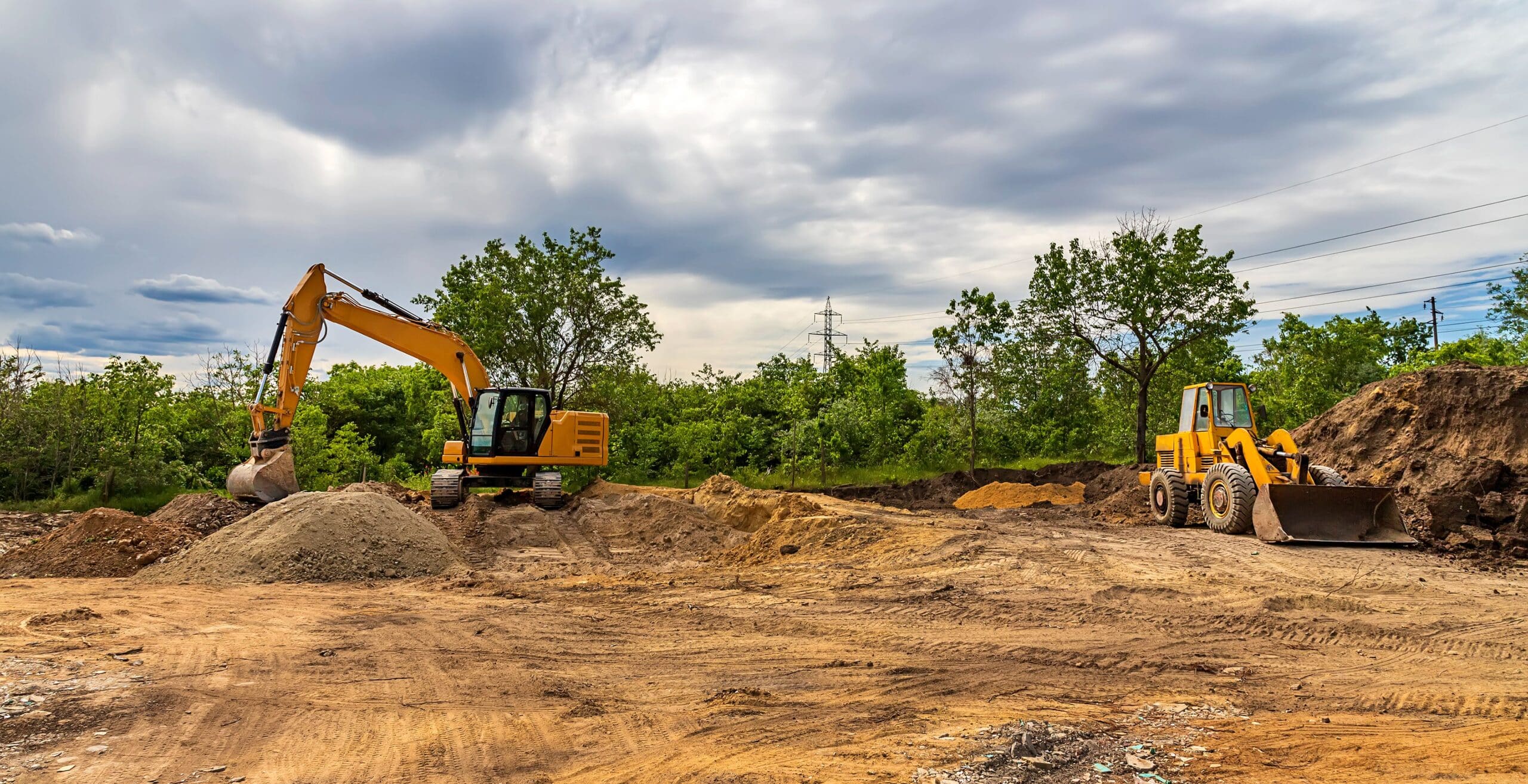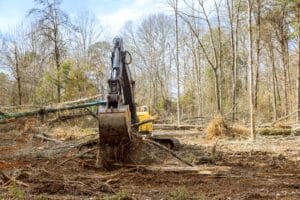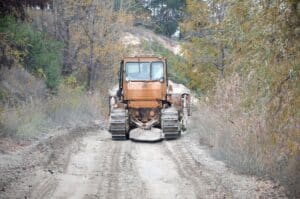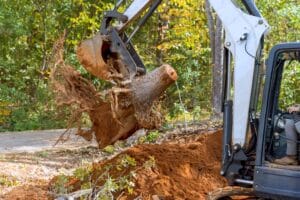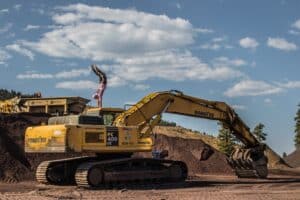Alabama land clearing costs vary depending on vegetation, terrain, location, obstacles, and more.
When preparing to build something new on a piece of land, it’s important to clear away any vegetation, debris, or uneven terrain. Land clearing is essential for projects like constructing a new home or starting any kind of new construction project. For any construction project, especially new developments or outdoor expansions, careful planning and budgeting are crucial. It’s not just for new builds, though. Land clearing can also make previously unusable land available for other uses.
Hiring a professional land clearing service can ensure the job is done efficiently and cost-effectively. Whether you’re a homeowner or a developer in Alabama, it’s important to understand the expenses involved in clearing land. Let’s take a look at the factors that influence the cost to clear land in Alabama.
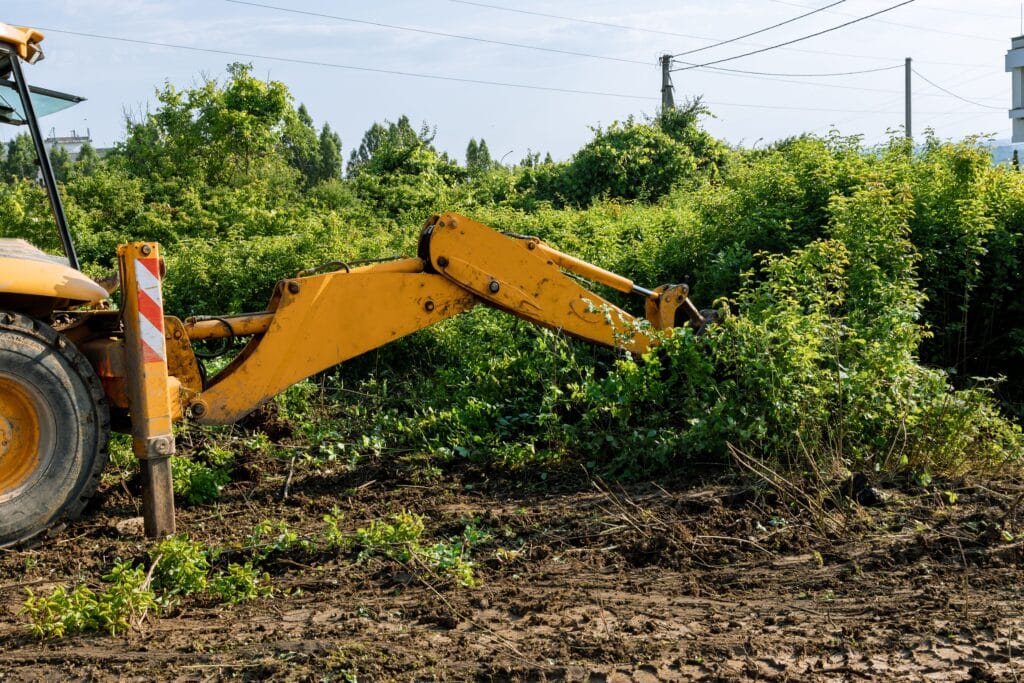
Factors That Affect Land Clearing Project Costs
Type of Vegetation
The biggest factor behind the cost of land clearing is the type and amount of vegetation that needs to be removed. Clearing lightly forested land with fewer trees and less dense vegetation is generally less expensive than clearing heavily forested land. Shrubs, brush, and small trees are easier to clear than dense forests, but still require specialized equipment and techniques.
Brush clearing involves using mulching machines or brush mowers to grind vegetation into mulch, which can be left on-site or removed based on your preference. Clearing dense, heavily wooded land on a wooded lot increases the cost, especially heavily forested area, if tree stump and debris removal equipment are required. DIY land clearing can be a viable option for individuals with a manageable amount of land, adequate equipment, and the time to undertake the work themselves.
Terrain and Accessibility
The cost of land clearing is also affected by the condition, terrain, and accessibility of the project site. If the land is free of obstacles and relatively flat, it will be less costly than hilly terrain full of large boulders.
It’s not impossible to clear land with rocky or stony soil, it just requires more manpower and specialized equipment like rock crushers or hydraulic breakers.
If your property is a wetland, or just swampy, that also can present challenges. They are delicate ecosystems and require careful clearing to minimize erosion or sedimentation.
If the site has underground utilities or aboveground utilities, land clearing companies will need to know. This can affect the project timeline and cost.
Also, if the site itself is in a remote location or otherwise very difficult to access, that will affect the cost per acre.
Clearing vs. Mulching
Forestry mulching is a land clearing method that involves using specialized equipment to grind trees, brush, and other vegetation into mulch. This mulch is then spread across the cleared area to provide nutrients to the soil and to prevent erosion. It is an environmentally friendly alternative to traditional land clearing methods, as it does not involve burning or hauling away debris. Moreover, forestry mulching can encourage the growth of native plants and improve wildlife habitats.
In comparison to traditional land clearing methods, forestry mulching typically requires fewer pieces of heavy equipment. It combines the processes of clearing, hauling, and disposing of debris, leading to reduced equipment and operational costs. Although clearing land and removing brush yourself can be a cost-saving option, it requires significant effort, equipment, and expertise to ensure the job is done safely and effectively.
However, depending on how you intend to use the land, traditional land clearing might be more suitable for your needs. Forestry mulching should generally be avoided in areas where a foundation will be constructed atop the cleared land. Mulching does not fully eliminate tree stumps or root systems in dense land, which may decay over time, creating empty spaces that could potentially compromise the foundation.
Land Clearing Permits Needed
As explained above, if you’re trying to clear land in a wetland, protected habitat, or other environmentally sensitive area, the cost could increase. Depending on local regulations, land clearing companies will likely be required to obtain permits before the clearing can begin. Obtaining a permit increases the cost and time of the project, especially if measures like erosion control or habitat restoration are required by local or state authorities.
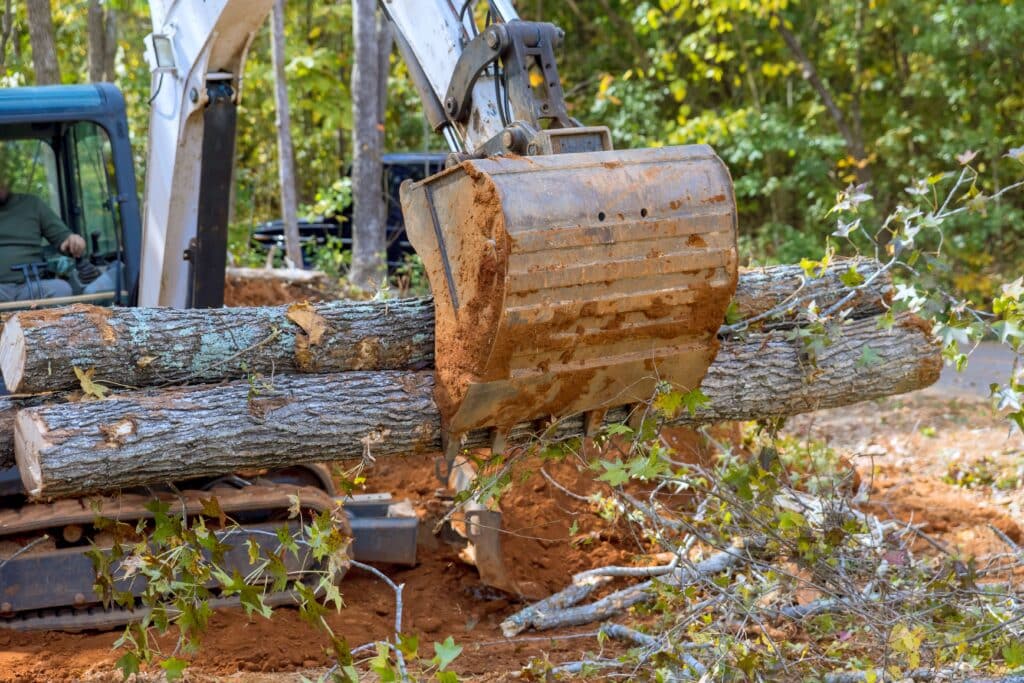
The Professional Land Clearing Process
Sawtooth Land Development is an experienced land clearing company based in Tuscaloosa and servicing all of Alabama. Here’s what our clearing process looks like:
1. Survey the Land
Before beginning the project, we will review a recent land survey to ensure compliance with property lines and setbacks before initiating any site work. This will be followed by a thorough walk-through of the property to identify and assess large objects, rocks, or trees. This will help us determine if they can be kept or if they need to be removed. We will also examine the overgrown vegetation to assess the tools and equipment required for the project, as well as ensure that it’s safe to proceed with any necessary digging.
2. Obtain the Necessary Permits
After devising a plan, we’ll ensure that we have obtained all the required permits to ensure that the project complies with local regulations and codes.
3. Clearing Overgrown Vegetation and Obstacles
Once all the necessary paperwork is in order, we can begin the project. We will follow the plan developed during the initial survey of your land. This may involve the removal of large rocks and trees, brush removal, and cutting down overgrown vegetation. Some bushes and plants with extensive root systems may require specialized tools and equipment for removal.
4. Debris Cleanup
After collecting all the material, we will ensure its proper disposal. If necessary, we also have a forestry mulcher to turn vegetation into mulch. Mulching is an environmentally friendly method of waste disposal that also enriches the soil with essential nutrients.
5. Grading The Land
The last step in the land preparation process is grading the land. This will provide you with a level, even surface, to start your new build.
Average Costs to Clear One Acre of Land in Alabama
The state average cost of clearing land in Alabama ranges from $1,600 to $4,700, with a median cost around $3,000. But the cost can easily go above or below that range. The best way to know for sure is to contact an experienced land clearing service near you for an estimate.

Sawtooth Land Development: Tuscaloosa’s Professional Land Clearing Service
At Sawtooth Land Development, we know that land clearing is a significant investment, and choosing the right land clearing company is an important decision. We’re proudly based in Tuscaloosa and serve all of Alabama. All of our projects begin with a free, thorough, in-person estimate.
No matter your need for land clearing services in the greater Tuscaloosa area, or across Alabama, Sawtooth is here. We have the experience and equipment to handle every aspect of land clearing, from dirt work, tree removal, stump grinding, forestry mulching, excavation, grading, right-of-way clearing, trail clearing, and more.
Our team also has plenty of experience on various projects, big and small. We’re also experts in sustainable land management so that we can oversee the use of natural spaces for projects. Furthermore, if you plan on building on the land cleared, we can provide you with site preparation services so you can start building as soon as our work is complete.
We’re committed to providing you competitive pricing and exceptional value, no matter the vegetation type, terrain, or intended development. We will work with you to create a plan that accomplishes your goals and fits your budget. Contact us today for a free estimate.

